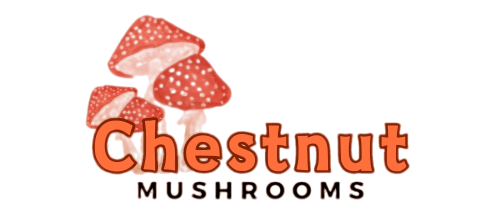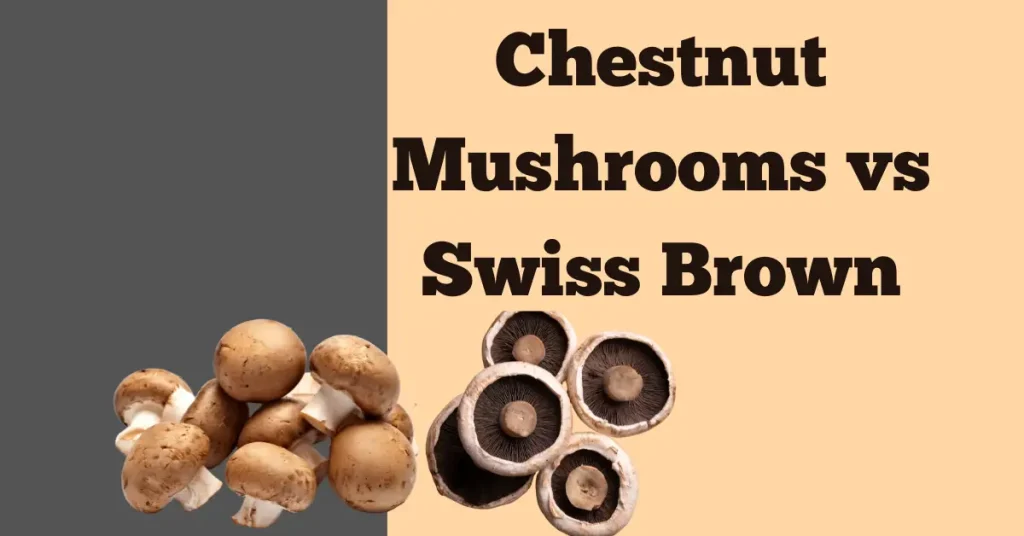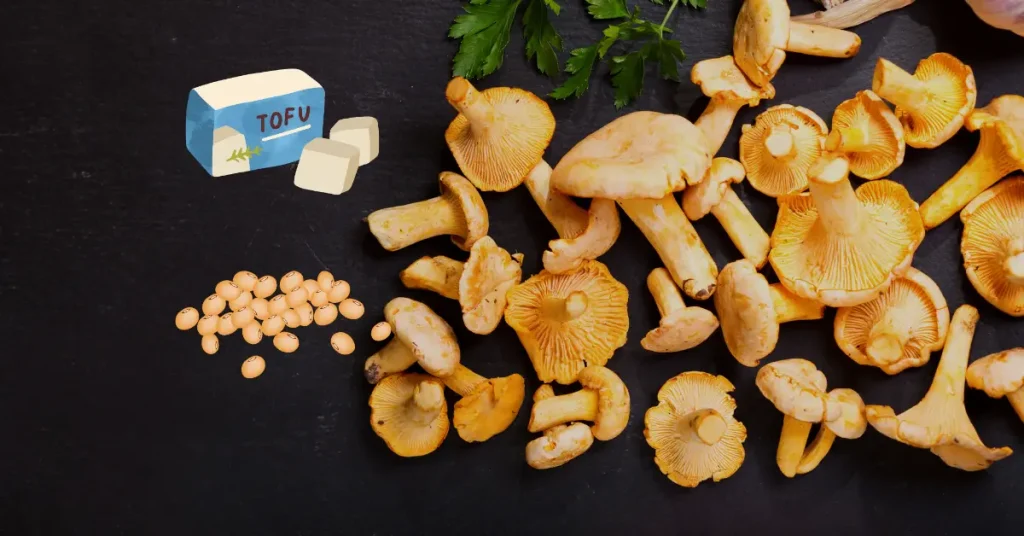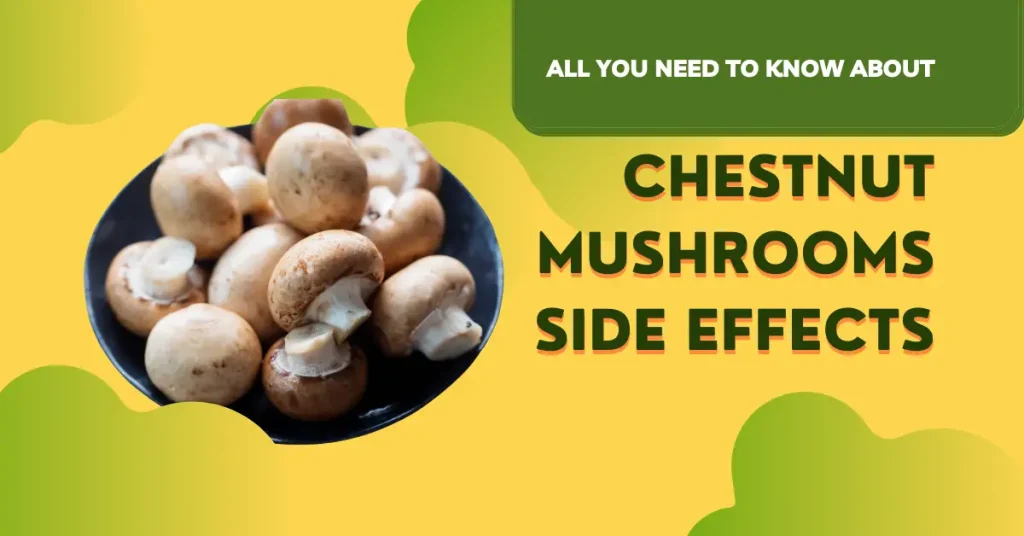Why are My chestnut mushrooms not fruiting?
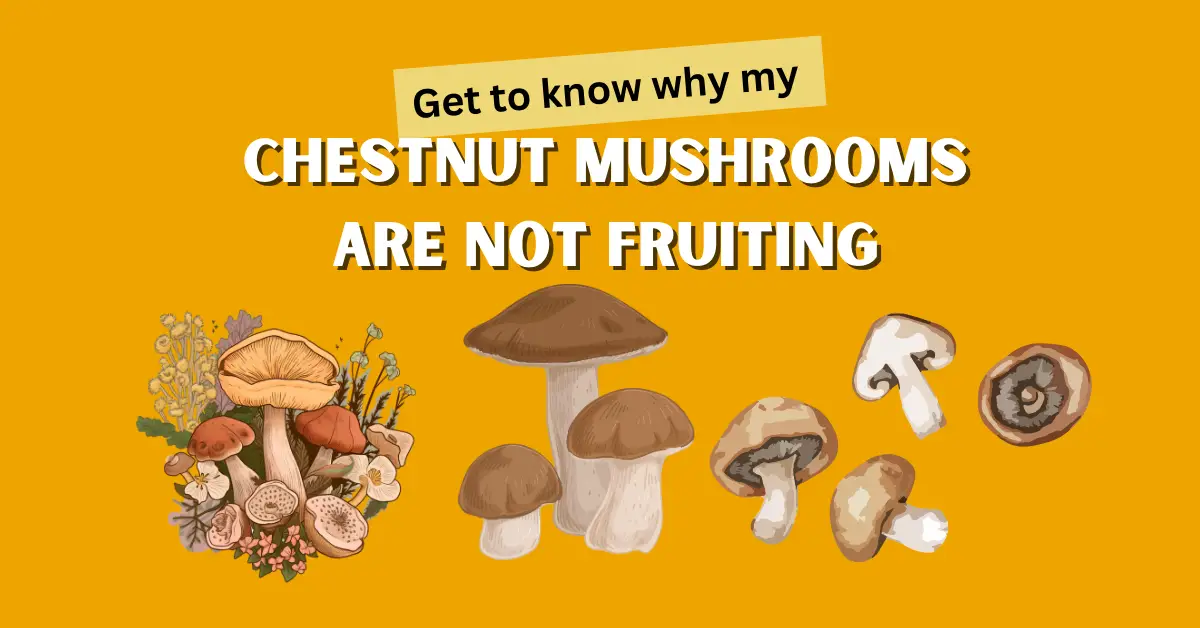
Different mushrooms take different times to fruit. Oyster mushrooms and shiitake mushrooms fruit within 2–3 weeks after the substrate has been fully colonized, while, Chestnut and reishi mushrooms can take up to 6 weeks to fruit.
It is a more concerning and problematic situation for the mushroom growers if mushrooms are not fruiting. In this post, get ready to know what is the fruiting requirement for chestnut mushrooms, the reasons for “chestnut mushrooms not fruiting” and solutions accordingly.
Fruiting Requirements For Chestnut Mushrooms
| Mushroom | Temperature | Light | Humidity | Air Exchange Rate |
| Chestnut | 12–24°C (53–75°F) | 12–16 hours of indirect light per day | 85–95% | 1-2 exchanges per hour |
These four are the indicators for the best fruiting but are these four only? No. Besides these four, the other factors that contribute to less or no fruiting are:
- Poor Substrate
- Poor Spawn Quality
- Not Adequate Nutrients
- Diseases and Pests
Temperature Role in Fruiting
Chestnut mushrooms typically thrive in temperatures ranging from 53°F to 75°F (12°C to 24°C). There are different temperature ranges for different varieties and gardeners must consider how important are the temperatures for mushroom cultivation, growth and fruiting.
| Mushroom | Prefer Warmer Temperatures | Prefer Cooler Temperatures |
| Chestnut | – | 12°C to 24°C |
| Button Mushroom | 21-24°C | – |
| Portobello Mushroom | 21-24°C | – |
| Shiitake Mushroom | 24-27°C | – |
| Oyster Mushroom | 21-27°C | – |
| Maitake Mushroom | – | 10°C to 24°C |
| Enoki Mushroom | – | 10°C to 18°C |
| Lion’s Mane Mushroom | – | 18°C to 24°C |
High temperatures may inhibit mycelial growth and development, leading to poor fruiting. If you observe premature fruiting or pinning (formation of mushroom primordia) before the mycelium has fully colonized the substrate, it could indicate that the temperature is too high.
The other effects of high temperature result in reduced fruit size, discoloration, odors and mold growth.
How To Maintain Temperature
Climate-Controlled Environment: This is the most effective way. Create a climate-controlled growing environment such as a greenhouse, grow room, or fruiting chamber. This allows to have precise control over temperature, humidity, and airflow. Install heating and cooling systems as needed to regulate temperature fluctuations.
Heating and Cooling Systems: Use heating systems such as space heaters, heat mats, or radiant heating panels. Install cooling systems such as fans, evaporative coolers, or air conditioning units.
Light Role
Mushrooms, “fungi” can live and grow without light. Being heterotrophic, they do not photosynthesize and obtain their nutrients from dead organic matter.
Mushrooms have been grown in dark places i.e. abandoned buildings, breweries, unused coal, caves and basements.
Sunlight's role on mushroom cultivation & growth is minimal, primarily affecting the coloration of fruiting bodies, as fungi grown in dark conditions may appear paler.
At Primordia (pinning) formation, light is necessary.
Humidity
Almost all types of mushrooms require high humidity ranging from 80 to 95%. For the chestnut mushrooms, low humidity levels inhibit mycelial growth leading to poor colonization. High humidity levels are necessary to ensure successful pinning. Inadequate humidity can result in stunted or malformed mushrooms.
On the other hand, high humidity levels can increase the risk of mold growth and contamination if not properly managed. Proper air circulation and ventilation can help prevent the buildup of excessive moisture.
A humidifier can be installed in the growing area if required to maintain consistent humidity levels.
Air Exchange Rate
The air exchange rate refers to the rate at which indoor air is replaced with fresh outdoor air within a defined space over a given period. It is typically expressed in terms of air changes per hour (ACH), which indicates how many times the volume of air in the space is replaced with fresh air within one hour.
In mushroom cultivation, maintaining an appropriate air exchange rate is important for providing sufficient oxygen to support mycelial growth and fruiting, removing carbon dioxide produced by respiration, and minimizing airborne contaminants.
If possible, design your fruiting space with windows, vents, or openings that allow for natural airflow.
if required, install mechanical ventilation systems such as exhaust fans, intake fans, or air circulation fans to facilitate air exchange in the fruiting area. Remember, clean air helps promote healthy mushroom growth and reduces the risk of contamination.
Poor Substrate
The substrate provides essential nutrients for the growth and development of chestnut mushrooms. Typically, chestnut mushrooms are cultivated on a substrate composed of various organic materials such as straw, sawdust, wood chips, or agricultural by-products like corn cobs or cottonseed hulls.
These materials serve as a food source for the mushroom mycelium, supplying carbohydrates, proteins, and other nutrients necessary for growth.
Beneficial microorganisms present in the substrate can facilitate nutrient cycling, suppress pathogens, and create favorable conditions for mushroom growth.
Poor-quality substrates may lack the necessary texture, density and nutrients required for the formation of a healthy mycelial network and mushroom fruiting.
Balanced Composition of Substrate
| Primary Ingredients | Straw, sawdust, wood chips, or agricultural by-products like corn cobs or cottonseed hulls. |
| Supplementary Ingredients | Poultry manure, soybean meal, or other nitrogen-rich materials.Gypsum or calcium carbonate.Agricultural lime and water. |
Poor Spawn Quality
Choosing high-quality spawn and ensuring proper inoculation techniques are crucial for successful fruiting. Spawn serves as the starting point for mushroom cultivation. It contains live mycelium, which is the vegetative part of the fungus responsible for growth and colonization.
To be considered high-quality, spawn should possess the following qualities:
- Vitality
- Purity
- Resistant to contamination
- Fast Colonization
- Adaptability
- Consistency
- Compatibility
Essential Nutrients
Chestnut mushrooms, like all fungi, require various essential nutrients for fruiting.
Besides water, oxygen and suitable environmental conditions, chestnut mushrooms require carbohydrates, proteins, nitrogen, phosphorous, calcium, magnesium and other minerals for successful fruiting.
When chestnut mushrooms experience a deficiency in essential nutrients, they may exhibit various symptoms that indicate poor growth and fruiting.
| Nutrient Deficiency | Symptoms | Solutions |
|---|---|---|
| Nitrogen | Reduced growth rate, smaller fruiting bodies, pale coloration. | Supplement with nitrogen-rich materials (e.g., poultry manure, soybean meal) or nitrogenous fertilizer. |
| Phosphorus | Slow growth, abnormal mushroom development, weak stipe structure. | Add phosphorus-containing supplements (e.g., bone meal, rock phosphate) or fertilizer. |
| Potassium | Irregular fruiting body shapes, reduced size, increased contamination risk | Incorporate potassium sources (e.g., wood ash, potassium sulfate) |
| Calcium | Irregular fruiting body development, distorted caps, weak stipes. | Use calcium-containing supplements (e.g., gypsum, agricultural lime). |
| Magnesium | Slow growth, yellowing/chlorosis of mycelium, reduced fruiting. | Add magnesium sources (e.g., Epsom salt, dolomitic limestone). |
| Iron | Chlorosis of mycelium, reduced fruiting, poor quality. | Supplement with iron chelates or iron sulfate. |
| Trace Minerals | Abnormal mushroom growth, reduced size/quality, increased diseases. | Use trace mineral supplements or micronutrient fertilizers. |
Diseases and Pests
Diseases and pests can have detrimental effects on chestnut mushroom (Pholiota adiposa) fruiting, poor mushroom quality, and even crop failure if not attended timely.
To mitigate the impact of diseases and pests on chestnut mushroom fruiting, growers should implement integrated pest management (IPM) strategies, including:
- Make all efforts to prevent contamination.
- Use high-quality substrate.
- Monitoring and Pest Scouting
- Employ biological controls.
- Chemical controls when necessary.
Conclusion
By identifying the problems at the right time and implementing the right strategies as discussed, growers can prevent fruiting problems in chestnut mushrooms.

Hi, I am Nazish Arif. I am a Food Scientist. On this Blog, I do share insights about Chestnut Mushrooms, Mushrooms Recipes, along with information of other mushrooms as well.
